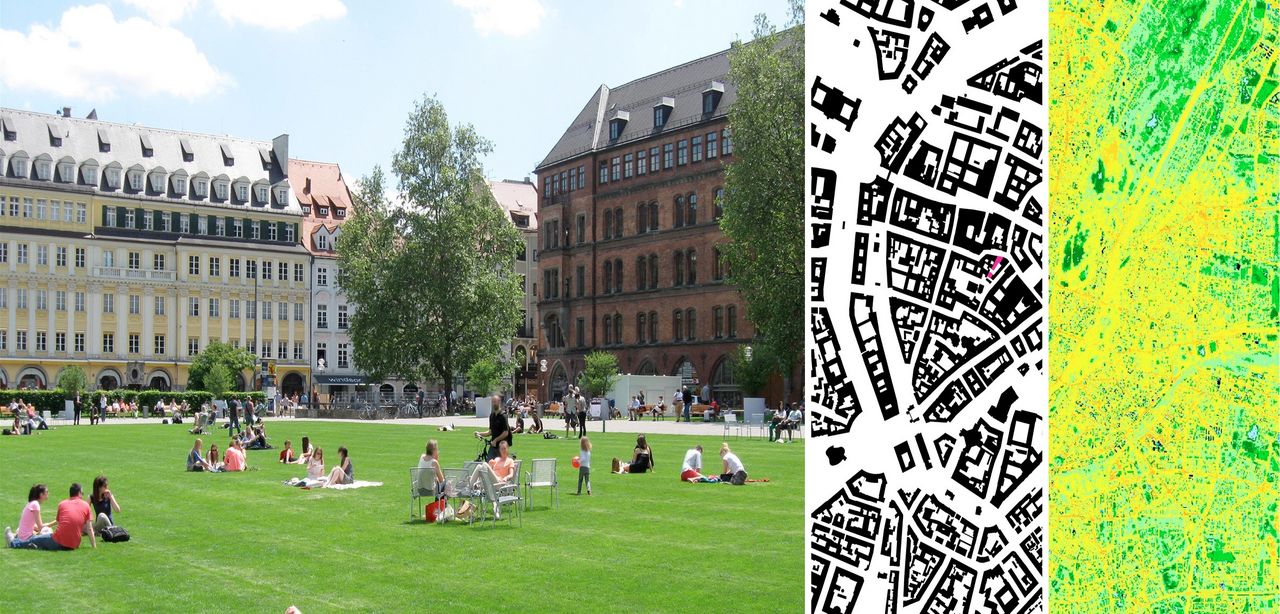100Places:M

The consequences of global warming and the temperature differences between urban and rural landscapes are diverse and complex. They range from extreme weather conditions and a changing species composition within the city´s ecosystem. In addition, a profound discourse about sustainability, aesthetics, health and security regarding optimal cohabitation (of species) amplifies the complexity. This discourse is increasingly shaping the research and planning of resilient and ecologically sustainable cities.
That's why in the interdisciplinary research project 100Places:M, design strategies for public space in symbiosis with the impacts of climate change and the heat island effect on the one hand, and the use and appropriation by different human and non-human actors on the other hand are investigated and further developed. The focus lies one one side on an analysis of 100 city squares in Munich and on the other, of an analysis of scientific categories and references, new climate-relevant practices in and for public space, the testing of experimental design strategies in teaching and, in this context, the development of adapted specialist terminology.
This takes place across the following specific questions:
• What must or can public spaces do to counteract and prevent phenomena of climate change and the heat island effect? Here, not only the adaptation of cities to consequences such as heat waves, drought, heavy rain or the sometimes conflictual new composition with alien species plays an important role, but also the potential of public places for the protection of climate and biodiversity
• How can (urban) climate, space design as well as use and appropriation by human and non-human actors cooperate productively? Here we focus on the complex integration of urban trees in the changing urban ecology and in the related discourses. In addition, we examine emergent practices such as urban farming or urban beekeeping in individual case studies in order to work out their relationships with and their potential for public space.
• What recommendations and resources can be made based on the analysis, case studies, and design experiments for the future planning of public spaces? This is about the conceptual tool and the design-practical strategies to be adapted to the new problems.
In addition to these planning recommendations, an online platform will be designed to provide access to the results and to generate a broad public for urban design, climate protection and adaptation, and sustainable cross-species coexistence.
Equally involved are the chairs of Landscape Architecture and Public Space of Prof. Regine Keller and Participatory Technology Design of Prof. Ignacio Farias.